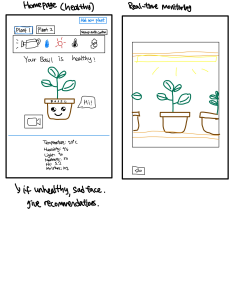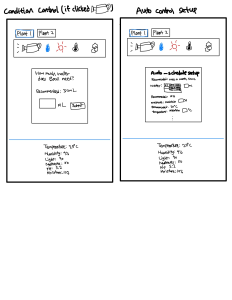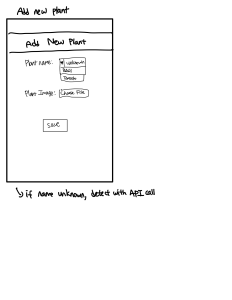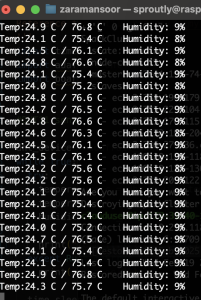No major changes were made to our system though we have decided to add a pid control system to our environment to control the actuators based on sensor data.
Challenges & Mitigation:
- Potential faulty sensors: If the sensors we have received are faulty we need to order backups which will increase our costs. We have managed to decrease costs in other areas to have more budget for potential backups.
- Not enough training data: An ongoing issue remains that we may not be able to collect enough plant data to sufficiently train the ML model, to combat this we have ordered the plants to start training.
Progress:
- Collected all the plants for training and testing, and started setting them up in different conditions for ML training
- Finished setting up the temperature and humidity sensor, and started setting up the light sensor
- Created a rough web application with all base pages
- Labeled online datasets consistently for ML models
Next Steps:
- Finish setting light and soil moisture, pH, and, nutrients sensor
- Establish a training framework for the ML model
- Implement web UI, and django channels with WebSockets
- Integrate RaspberryPi with web app
A was written by Zara, B was written by Jana, C was written by Yuna.
Part A: Our product addresses global factors by recognizing that plant care is a universal activity, with people worldwide facing different challenges in managing plants due to varying levels of expertise, time, and environmental conditions. This product bridges the gap for individuals who lack the time or knowledge to care for plants, offering a solution for growing herbs, fruits, vegetables, and flowers at home, regardless of experience. It is particularly valuable in remote areas or regions with limited access to plant care resources, providing an educational tool for users at all skill levels. Additionally, its remote monitoring capabilities support plant care in diverse global settings, making it a versatile solution for anyone looking to grow plants efficiently, no matter where they are located.
Part B: In many cultures, plants hold symbolic and spiritual significance. Our system offers personalized plant care recommendations that meet the specific needs of plants that hold cultural significance, such as herbs, flowers, and medicinal plants. The system is designed to adapt to a wide range of growing conditions, ensuring that users from diverse cultural backgrounds, regardless of level of expertise or traditions, can effectively use the technology. By providing a simple and intuitive way to manage plant health, users can stay connected to the plants that are important to them, while also benefiting from automation and helpful insights that make plant care easier.
Part C: Our product solution addresses environmental challenges by allowing optimization of resource consumption for plant cultivation in home settings. The greenhouse system reduces energy use and water waste through precise irrigation that only delivers the water and nutrient amount that is needed for the plant. The system detects the plant conditions and water the appropriate amount rather than merely watering based on the typical watering schedules – this is particularly valuable in regions that are facing water scarcity. This plant condition detection also helps prevent overfertilization that can lead to soil degradation. Furthermore, our product solution allows easy plant cultivation in limited spaces, which improves air quality and reduces the carbon emissions caused by transporting commercial produce.






